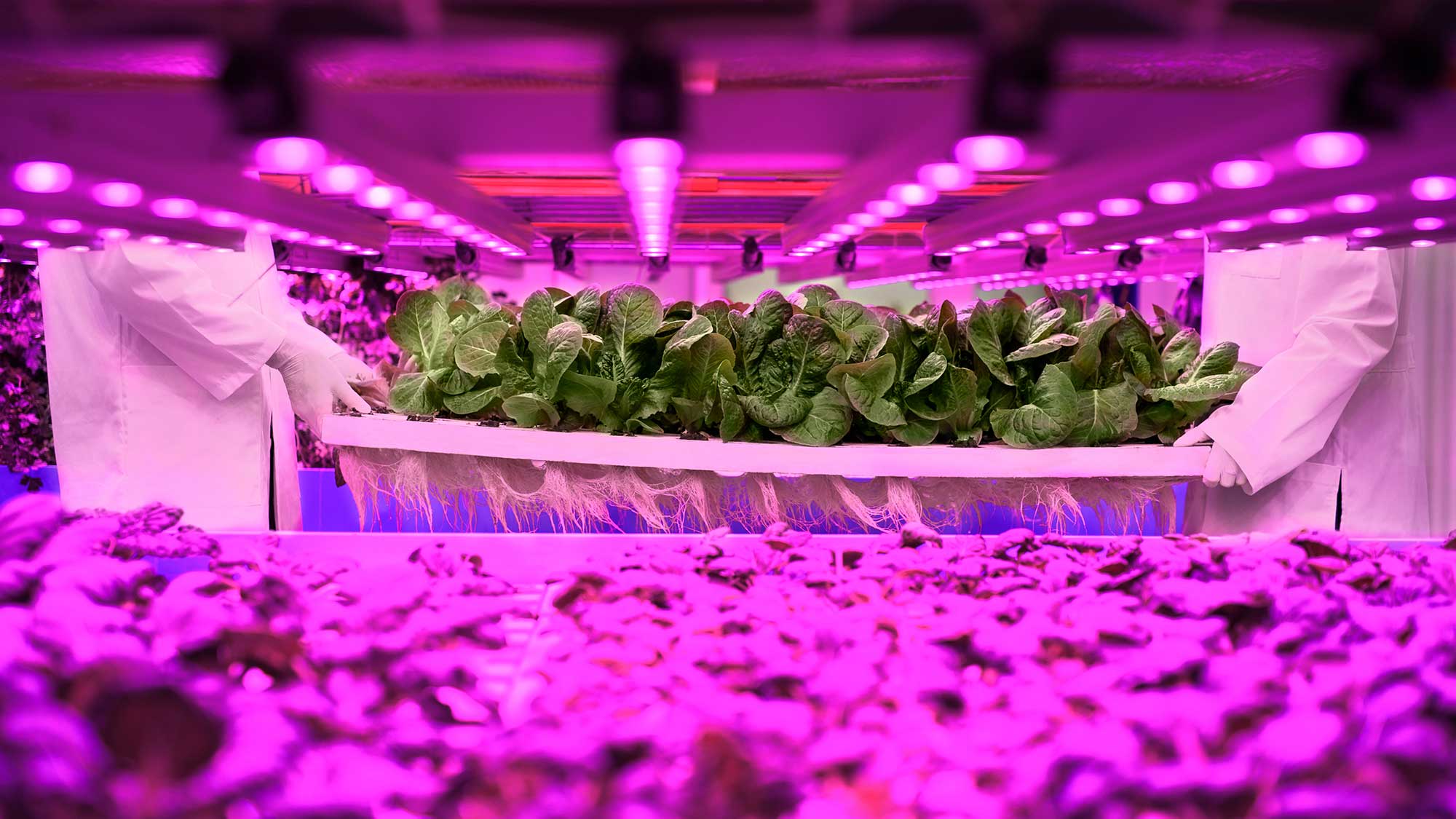In urban agriculture in vertical indoor farms, the light does not come from the sun, but from purple-coloured LED lamps. This allows crops to be grown all year round in layers on top of each other. It would save a lot of agricultural land, reduce food miles, and require less water and pesticides. But it does take power. A lot of power. If the electricity for vertical farms is generated with solar panels, these will take up at least as much space as the vertical farm saves.
Lettuce, peppers, tomatoes and cucumbers from urban farms seem to prove that feeding the world’s cities can be solved by high tech. However, these crops contain hardly any carbohydrates, proteins or fats. Wheat, pulses, roots and oilseed crops are needed. These are far more difficult to grow vertically. A loaf of bread from an vertical indoor farm would cost 345 euros, research shows.
Read the full article on Low Tech Magazine. Warning: the blog is hosted on a computer in Barcelona running on solar power. In dark periods/bad weather it can sometimes be inaccessible.
Image: Halfpoint/Shutterstock



